1 Ohm's Law
E=I*R
This formula is read descent of
potential is E when current I flow on R.
This is not current I flow on R when charged by potential E. The
reason why
will be shown later.
2 Give any potential to any point of circuit.
We can set up any potential by deviding
resister.
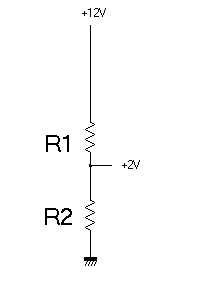
If I want
to get bias voltage of 2V, set R1:R2=10:2 and it will be all
right.
3 Separate by
vertical lines
I will
show you an example with this simple circuit.
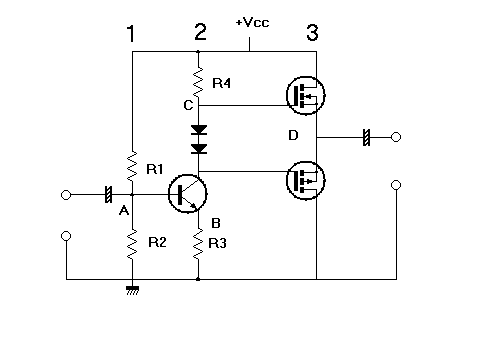
Line 1 : +Vcc
is devided by R1 and R2, and it makes a potential of point A.
Potential
of point B is 0.6V less than that of point A, because Vbe=0.6V in
bipolar
transistor.
If the
potential of B is determined, we can set any value to the current
at 2nd
stage by
changing R.(Because potential of B is that of voltage regulator.)
4
Formula" I=E/R" is permitted only when E is a voltage
regulator.
I will show you that current I flow
on R when charged potential E is wrong.
In ordinary
case power supply has an impedance.
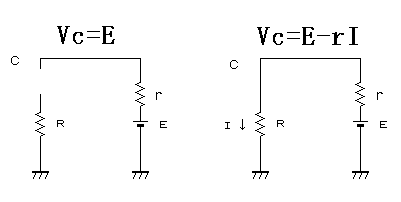
When the impedance of power supply
is r, +Vcc descends as current flow.
So the
potential of C will be
E-I*r
Therefore formula "I=E/R"
is permitted only when E is a voltage regulator or I is
small enough.
5 Line 2 is a class A stage
Now we can choose any value of R3,
then what it should be?
The answer is in the fact this stage is class A. In case of
2SC1775, the upper limit of Ic at low
distortion is about less than 10mA. So it is adequet when Ic is
set at 4mA. In that case Ic ranges
from 0 to 8
mA when signal is in.
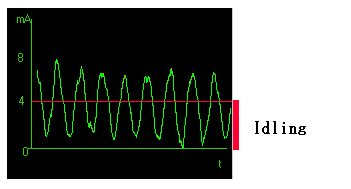
Imagine
Ic's behavior
Then
choose R4 as power supply will be most efficient.
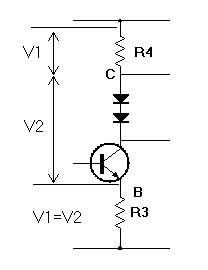
Potential
of C is center point of Vcc and Ve.
6 Line 3 : Class B push-pull stage
What's about potential of D? Substract Vgs of N channnel FET from
potential of C,
this is the potential of D. But this is thought to be potential
C-0.6V, because of diode's
roll of voltage regulator.
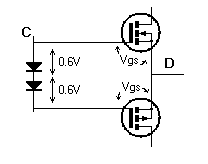
Index





